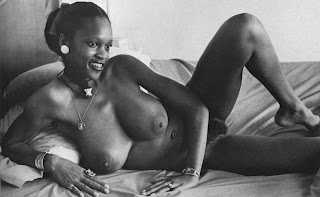The Red light District of New Orleans (Storyville) circa 1895-1920
 (Madame Lulu White-Famous mulatto madame)
(Madame Lulu White-Famous mulatto madame)I’ve been asked to elaborate on the subject of Black sex providers of yesteryear. So it is my honor to present to you my knowledge of black prostitution, brothels, and Madame’s of yesteryear.
To my amazement there isn’t much documented on this topic. Even as I search the Internet, there seems to be a limited amount of information to use. But thanks to the Library and my 10+ years of interest in prostitution, I have managed to compile enough juicy info about my black brothers and sisters in this industry hundreds of years ago.
I’m really excited that my readers take an interest in African American sexuality even though it’s prostitution. I always said that consensual sex is going to bring the races closer together, and it should!
Let me start off by introducing you to the “Red light” district of New Orleans circa 1895-1920. This particular area was referred to as “Storyville”, which is known today as “The French Quarter”. Look it up!
Storyville's gateway Basin Street, made legendary through song, was lined with extravagant bordellos -- from the infamous mulatto madam Lulu White's Mahogany Hall to Emma Johnson's mansion, where sex circuses were regularly staged. It was a district filled with greed, excitement, sin, and the raucous rhythms of a new American music: jazz.
The area was set up to limit prostitution to one area of town where authorities could monitor and regulate the practice. In the late 1890s, the New Orleans city government studied the legalized red light districts of northern German and Dutch ports and set up Storyville based on such models. Between 1895 and 1915, "blue books" were published in Storyville. These books were guides to prostitution for visitors to the district's services including house descriptions, prices, particular services and the "stock" each house had to offer. The Storyville blue-books were inscribed with the motto: "Order of the Garter: Honi Soit Qui Mal Y Pense (Evil to Him Who Evil Thinks.)"
Brothels in Storyville ranged from cheap "cribs" where prostitutes toted around small mattresses, to more expensive houses up to a row of elegant mansions along Basin Street for well off customers (the term "crib" originated in San Francisco's red-light district). New Orleans' cribs were 50-cent service fees, whereas the more expensive establishments could cost up to $10. Black and white brothels coexisted in Storyville; however, black men were barred from legally purchasing services rendered in either black or white brothels.
(Louis Armstrong and Billie Holiday-"Farewell to Storyville")

Comments
Post a Comment